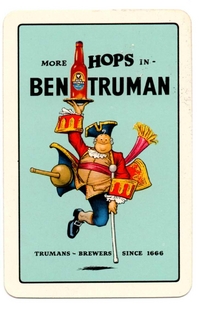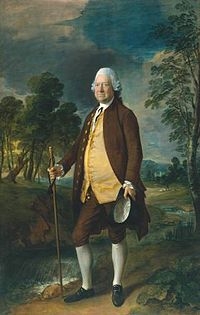How a London giant was sent to its grave
Added: Saturday, January 19th 2013
A new brewery in London, due to open in the spring, will bring back the famous name of Truman, once a mighty force in the capital. In Decmeber 2012, I reported that James Morgan and Michael-George Hemus plan to launch their 40-barrel plant in Hackney Wick. They have won the right to use all the old Truman’s brand names and livery, including the Black Eagle symbol still cherished by legions of cockney drinkers.
Truman’s is deeply embedded in my drinking genes. I grew up in the East End and vividly recall when I was a child a giant poster close to West Ham United’s ground that showed a cartoon version of Long John Silver with his crutch and peg leg and the slogan “There are more hops in Ben Truman”.
I was intrigued. I drank the beer when I was of legal age. And then, as a journalist, I followed the bizarre events that led to the closure of a successful brewery. Truman’s had the misfortune to fall into the hands of property speculators who made Long John Silver seem a very second division pirate in comparison.
I shall monitor the launch of the new brewery this year but I will first set the scene by tracing the rise and fall of the original Truman’s brewery.
It was such a massive enterprise that in Charles Dickens’ novel David Copperfield, published in 1850, the ever optimistic Mrs Micawber said of her husband, who was always in desperate need of employment: “I have long felt the brewing business to be particularly adapted to Mr Micawber. Look at Barclay Perkins! Look at Truman, Hanbury and Buxton! It is on that extensive footing that Mr Micawber, I know from my knowledge of him, is calculated to shine; and the profits, I am told, are e-NOR-mous!”
Alas, the hapless Micawber failed to find work in the brewing industry. But his wife was right on one point: the profits were indeed e-NOR-mous.
The old Truman’s chimney still stands in Brick Lane in Whitechapel. The area today is bustling and multi-ethnic, crowded with small workshops and a great variety of restaurants and cafes. It’s hard to believe that when Truman’s first brewed it stood on open land, surrounded by fields.

Joseph Truman went to work at a small brewery in Brick Lane in 1666. He became the manager and members of his family eventually took over the business. Ben Truman joined in 1722 and he built a new brewery, the Black Eagle, two years later on the same site. He expanded the company with enormous energy and became a leading member of what was ironically dubbed “the beerage”. He was knighted, had his portrait painted by Gainsborough (see image), and became fabulously wealthy.
He took on partners, turning the company into Truman, Hanbury & Buxton. Their success was built on porter and stout, dark beers made possible by London’s water that is rich in sodium chloride. By 1835, Truman’s was producing 200,000 barrels a year. When pale ale started to make inroads into the sale of dark beer, Truman’s hurried to Burton-on-Trent and opened a second brewery there in order to make use of the quite different water – heavy with sulphates – that made pale ale brewing possible.
Truman’s forged ahead. It became the second-biggest brewery in Britain, with Bass in pole position. Once it became possible to scientifically treat brewing water, Truman’s closed its Burton plant and concentrated on pale ale and bitter in Brick Lane as porter and stout went into decline.
All was well with Truman’s until the mad property scramble of the 1950s and 60s. Speculators such as Charles Clore and Sir Maxwell Joseph started to take an interest in breweries for one simple reason: to own their large pub estates.
Clore attempted and failed to buy the major London brewing group Watney Mann in 1958. In 1971 Joseph’s Grand Metropolitan Group bought Truman’s and a year later merged Truman’s with Watney Mann. When fears were expressed that the merger would lead to brewery closures and loss of choice for drinkers, Joseph declared that Watney and Truman would continue to operate as separate centres.
It was a hollow promise. Two years later it was announced that Watney Mann & Truman would become “a single profit centre”. The Black Eagle brewery closed in 1989, a closure that made no business sense unless your sole interest was owning and selling property. The brewery was producing close to one million barrels a year and had found new favour with a range of cask beers such as Tap Bitter and Samson Strong.
James Morgan and Michael-George Hemus hope to bring back some of those old Truman names and plan eventually to run a few pubs as well. I have no doubt they will enjoy greater fortune than Mr Micawber.
*This feature was first published in the Publican’s Morning Advertiser on 17 January. Thanks to Jeff Sechiari of the Brewery History Society for help with images.






